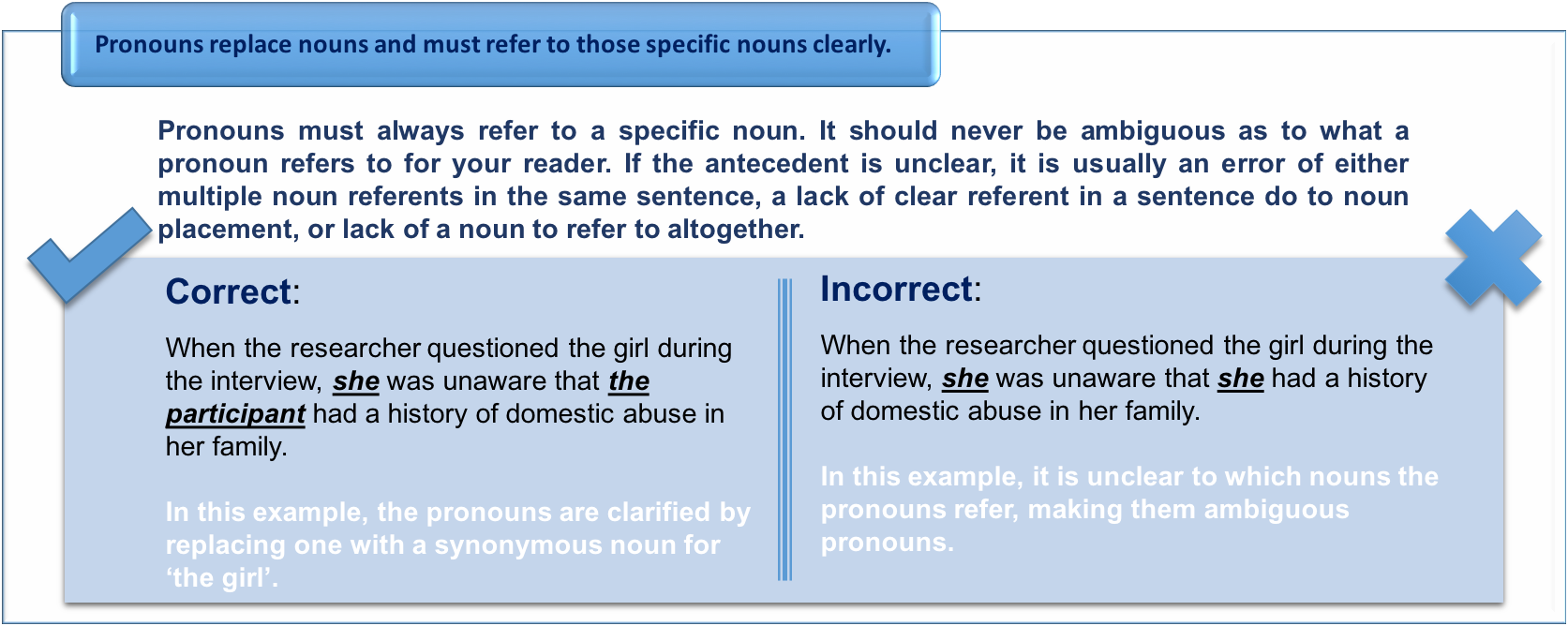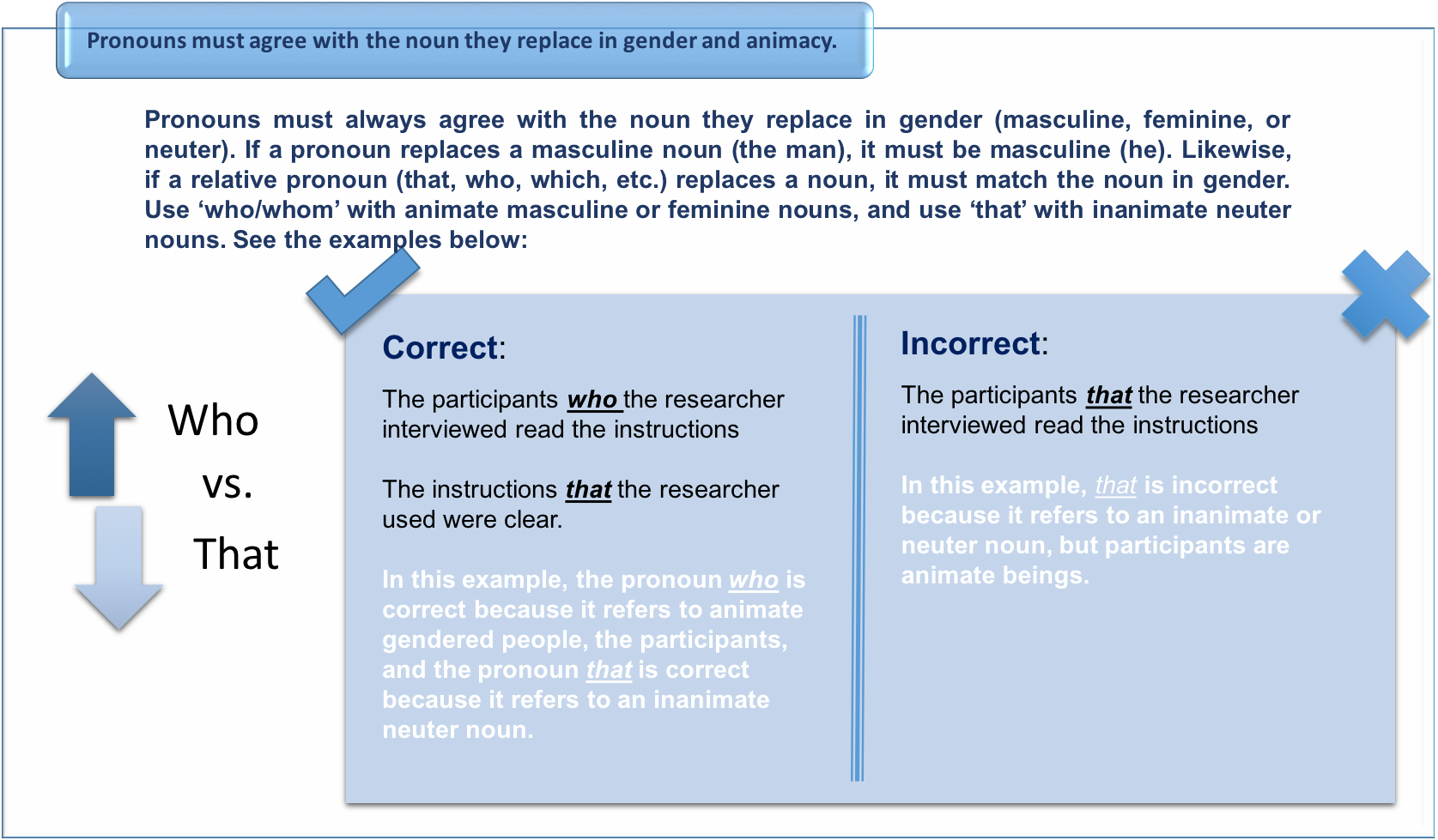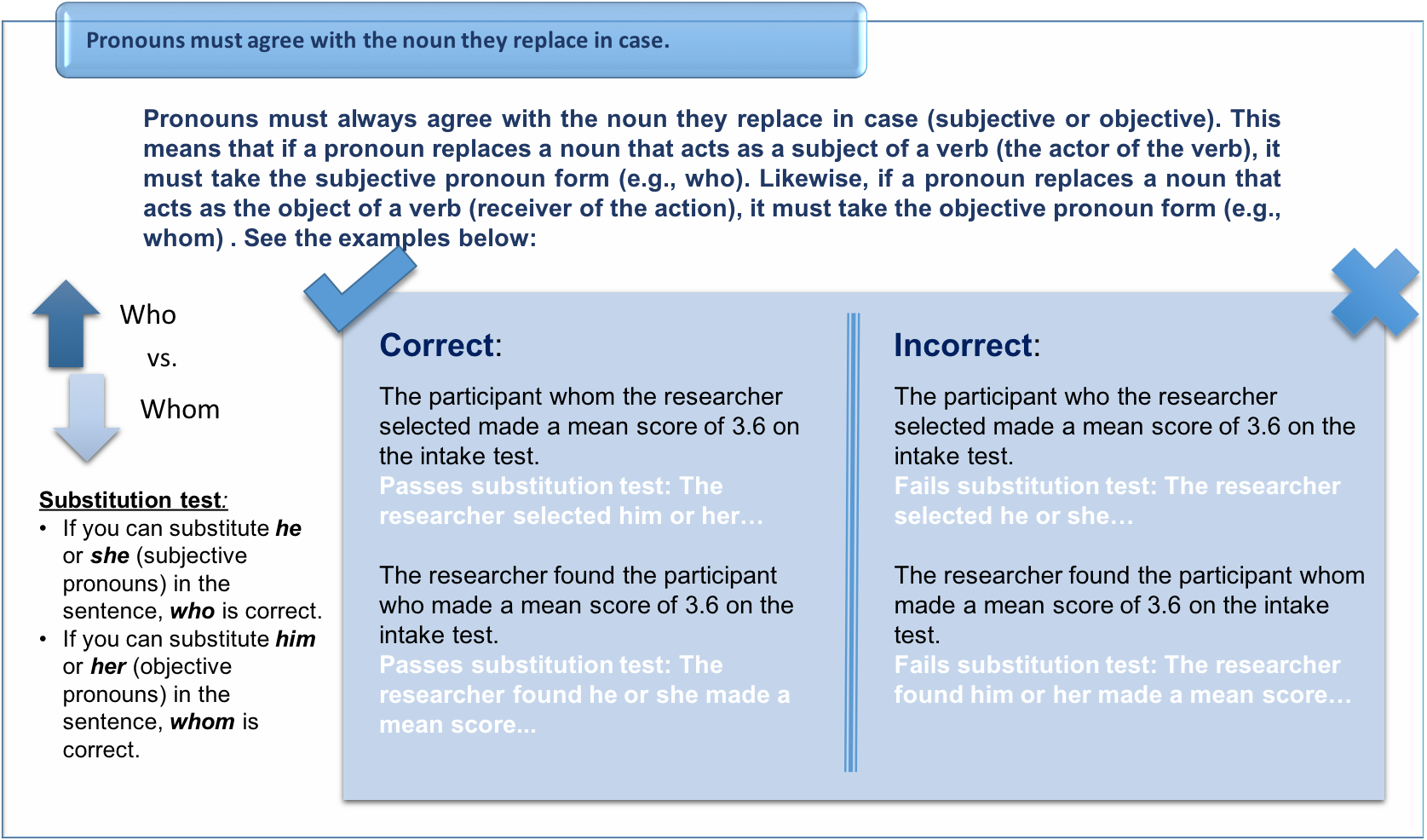EXPLANATION AND EXAMPLE
Pronouns are a lexical category of words that refer to a noun that takes the place of another noun; more specifically to manuscript writing, pronouns replace a noun that has already been introduced recently in a body of text in order to avoid repetition or redundancy and to improve readability.
GENERAL PRONOUN RULES

WHO vs. THAT

WHO vs. WHOM

APA SPECIFIC PRONOUN RULES
APA has specific rules regarding certain types of pronoun usage in attributions, gendered reference.
ATTRIBUTION
As the author or primary investigator of a research study or experiment, avoid the use of third person pronouns to refer to yourself and the steps in your methodology. When referring to the experiment steps, use a personal pronoun to avoid ambiguity in relation to other authors referenced in your citations.
GENDERED PRONOUNS
APA recommends that researchers avoid the use of the generic ‘he’ to refer to both sexes as it contributes to writing biases (see our section on reducing writing bias for more information). To avoid using generic ‘he’, APA recommends pluralizing nouns whenever possible in order to utilize the gender-neutral ‘they’. For example:
USE OF S/HE OR SINGULAR THEY
APA does not recommend the use of either pronoun-combinations such as s/he or singular they. S/he can be distracting and confusing to a reader, and singular they is viewed as too informal grammatically at this time. Instead, APA recommends options such as:
- Pluralize the generic nouns.
- Reword the sentence concisely to omit the pronoun.
- Use he or she, his or her, etc.; however, this option should be used sparingly as it creates wordiness.
WHERE TO FIND MORE INFORMATION
For more information about formatting for APA Style, see pages 66, 68, and 79-80 of the Publication Manual, Sixth Edition (Smoothness of Expression 3.06, Precision and Clarity 3.09, Pronouns 3.20).
ADDITIONAL RESOURCES
Additional online resources for APA grammar mechanics can be found at: